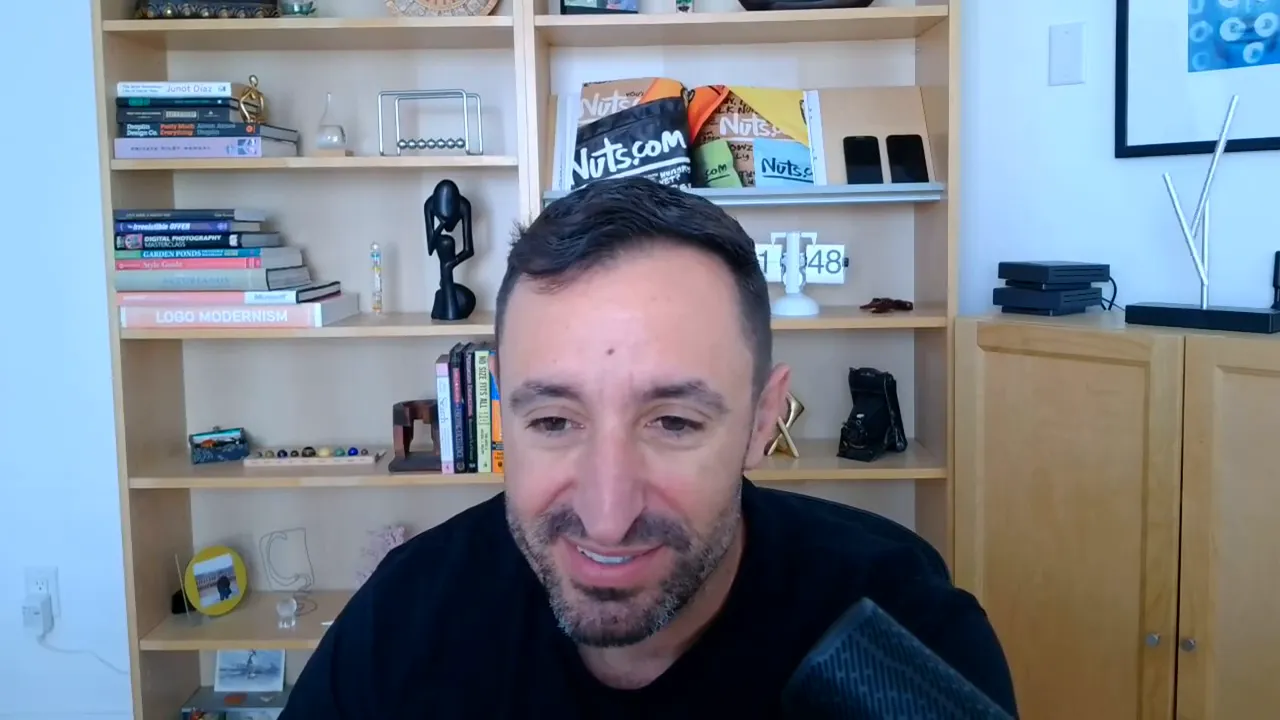Marketing Funnels That Actually Work in 2025: A Practical Guide for E‑commerce
Driving traffic to an e-commerce store is one thing. Turning that traffic into repeat customers is another. The hardest part of running a successful e-commerce business isn’t building the site. It’s being seen, converting visitors when they arrive, and measuring what actually moves the needle. This guide breaks down a modern, pragmatic approach to marketing funnels, channel selection, tracking, and reporting so you can make smarter decisions and stop guessing which spend is helping (and which is wasting money).
Table of Contents
- Why Funnels Still Matter (and What’s Changed)
- Top / Middle / Bottom: Practical Definitions
- Push vs. Pull: Use the Right Tool for the Job
- TikTok: The Discovery Engine (Who Should Use It)
- Meta (Facebook & Instagram): The All‑purpose Workhorse
- Google & Google Shopping: Bottom-Funnel, High Intent
- Shopify vs WooCommerce vs Enterprise: What to Expect From Feeds
- Attribution, Tracking, and Reporting: Where the Real Work Happens
- Server-side Options and Quick Wins
- Make Channels Work Together: Don’t Treat Them as Silos
- Budgeting and Expectations for E‑commerce
- Practical Checklist Before You Scale Ad Spend
- Words on Privacy and the “my Phone is Listening” Myth
- FAQs
- Final Thoughts: Diversify, Instrument, Iterate
- Actionable Next Steps
Why Funnels Still Matter (and What’s Changed)
The marketing funnel top, middle, and bottom remain the organizing principle for an effective e-commerce strategy. But the way customers move through that funnel has changed dramatically. In the past, you could reach someone with a handful of offline touches (print, radio, OOH). Today, the modern consumer requires many more digital touchpoints across different channels before they convert.
Key realities for 2025:
- Multiple touchpoints are the norm: Customers often need a dozen or more exposures across platforms before making a purchase.
- Channels play different funnel roles: Some channels are discovery-focused (TikTok), others are pull-driven (Google Search & Shopping), and some span the whole funnel (Meta/Facebook/Instagram).
- Attribution is noisy: No platform will hand you a perfect one-to-one view of every conversion touch. The goal is piecing together an honest, practical view of the customer journey using first‑party data and good reporting.

Top / Middle / Bottom: Practical Definitions
Use these working definitions to map channels and tactics:
- Top of Funnel (Awareness / Discovery): People don’t know you or your product yet. Objective: reach and intrigue. Typical KPIs: impressions, video views, branded search lift.
- Middle of Funnel (Consideration / Engagement): People know you and have shown some interest. Objective: capture contact or cookie, nurture with content and offers. Typical KPIs: email signups, list growth, and remarketing audiences.
- Bottom of Funnel (Conversion / Purchase): High purchase intent. Objective: convert. Typical KPIs: transactions, ROAS, CPA.
Push vs. Pull: Use the Right Tool for the Job
Two core marketing dynamics determine how you should pick channels:
- Push (interruption/discovery): Platforms like TikTok, Instagram, and other social feeds are interruption-driven. Creative must be thumb-stopping and tailored for discovery; expect impulse buys and quick product virality.
- Pull (search intent): Google Search and Shopping capture active buyers who are already looking for a product. These are high-intent clicks and typically deliver better conversion rates on product pages that match the search query.
TikTok: The Discovery Engine (Who Should Use It)
TikTok has become a traffic giant and discovery engine. Roughly three in four TikTok shoppers discover products when they weren’t actively searching for them, which makes TikTok especially potent for impulse-driven, product-centric brands.
When to use TikTok:
- Products with a strong visual or demonstration angle (gadgets, fashion, beauty, home goods).
- Brands that can support authentic, short-form content and work with creators to scale social proof.
- Companies are willing to accept that many initial purchases will be lower-margin acquisition buys that pay off over time.
TikTok also has a built-in influencer/affiliate marketplace via TikTok Shop, which simplifies partnerships compared to manual outreach. This makes it a fast route to volume when the creative resonates.

Meta (Facebook & Instagram): The All‑purpose Workhorse
Meta still acts like the 800‑pound gorilla. Its ecosystem covers social feeds, marketplaces, and even messaging apps, enabling campaigns across awareness, consideration, and conversion. Over the years, Meta’s algorithms have become extremely good at finding the right buyers if you feed the system with solid creative and conversion events.
Practical notes for Meta:
- Budget expectations: Meta is competitive. A practical starting point is $100/day if you want statistical significance; $3k/month is a common floor for meaningful testing and scaling.
- You’re buying data, not just impressions: The audience and conversion signals you gather are arguably as valuable as the direct purchases you use to build lookalikes and inform other channels.
- Let the algorithm do the heavy lifting: Modern campaign structures use fewer manual audience layers and rely on Meta’s automated targeting. Focus on creative variety and the quality of conversion events.
Google & Google Shopping: Bottom-Funnel, High Intent
If a shopper is actively searching for your product, Google will often send the most qualified traffic. Google Shopping is especially valuable for e-commerce because it surfaces products directly in a shopping module and can deliver both free and paid impressions.
How to make Shopping work:
- Feed quality matters: Titles, descriptions, images, categories, price, and availability must be accurate and complete. Missing attributes are the most common cause of disapproved or underperforming listings.
- Inventory sync: Google disapproves of products that show incorrect stock or shipping data. Real-time shipping rates and carrier integration often create complexity; consider pragmatic manual shipping rules if automated rates cause mismatches.
- Free impressions exist: Google Shopping offers organic visibility within its marketplace module. Don’t skip the feed just because you don’t plan to bid aggressively.

Shopify vs WooCommerce vs Enterprise: What to Expect From Feeds
Platform choice affects how much hands-on work your feed will require:
- Shopify: Provides native feed support and tends to be easier to set up. For many merchants, Shopify + its feed tools are “plug and play.”
- WooCommerce / Magento: More flexible and powerful, but feeds often require mapping and cleanup. If you have custom fields or tens of thousands of SKUs, expect to invest in feed engineering.
- Shipping and carrier rules: These are frequent trouble spots. Mismatched shipping information is a top reason products get disapproved in Google Shopping.
Attribution, Tracking, and Reporting: Where the Real Work Happens
Tracking has become one of the most strategic (and technical) elements of modern e-commerce marketing. Privacy changes (iOS updates, in‑app browsers) mean first‑party data and server‑side tracking are no longer optional.
Core tracking recommendations:
- Server-side tracking: Collect conversions and events on your server (or via a server‑side gateway like a cloud function) and forward those events to ad platforms. This reduces signal loss from in‑app browsing and cookie restrictions.
- Use standardized events first: In GA4 and platform SDKs, prefer built-in events (purchase, generate_lead, add_to_cart) before creating custom events. This makes cross-platform reporting more straightforward and more robust.
- UTM discipline: Track first-touch and last-touch UTMs and include campaign, source, medium, creative ID, and timestamp. Store the raw UTM payload in your database for post-hoc analysis and multi-touch modeling.
- Reporting layer: Pull first‑party data (orders, CRM exports) and platform data into a central dashboard (e.g., Looker Studio). Then build custom views that answer business KPIs, not just platform vanity metrics.

Server-Side Options and Quick Wins
If you don’t have in-house tracking expertise, practical solutions exist:
- Managed server-side tools: Providers like Stape.io (and comparable services) simplify server-side tagging and reduce maintenance overhead.
- Platform integrations: Meta and other platforms now offer easier server-side integrations in their UI these can be a significant first step before building a custom server pipeline.
- Start small: Track core events (page_view, add_to_cart, purchase, lead) server-side, then expand to more granular signals once you have reliable data.
Make Channels Work Together: Don’t Treat Them as Silos
One of the biggest mistakes brands make is operating channels as independent silos: a TikTok team, a Meta team, a Google team, each trying to take credit. Customers move across platforms. The combined effect of discovery, remarketing, and search is often what drives conversions.
How to operationalize cross-channel thinking:
- Centralize data collection (UTMs, server events, CRM).
- Build remarketing audiences from discovery traffic (TikTok views → Meta remarketing → Google retargeting).
- Review multi-touch paths in your dashboard and look for patterns (first touch Google Search → last touch Meta ad → conversion on site) so you don’t accidentally turn off a critical channel.

Budgeting and Expectations for E‑commerce
Realistic budgeting is critical. Some practical benchmarks:
- Meta: Minimum sensible testing budget is usually $3k/month for a brand-new store if you want fast, actionable results.
- TikTok: Can be efficient for discovery; creative testing is the lever. Expect a higher creative-to-conversion learning curve but quicker virality when you find product-market fit.
- Google Shopping: Start by ensuring your feed and inventory are clean. Shopping often delivers the most qualified traffic for product searches.
Remember: in many cases, you’re initially acquiring customers at a loss to grow lifetime value. Plan for multi-order economics and measure cohorts over time rather than expecting immediate profitability on every ad-driven order.
Practical Checklist Before You Scale Ad Spend
- Feed sanity check: complete product attributes, accurate prices, correct images, and stock availability.
- Server-side event capture: at minimum, capture purchase, add_to_cart, and lead events server-side.
- UTM strategy: consistent naming across campaigns and channels; store original UTMs with order records.
- Reporting dashboard: combine first-party purchase data with platform metrics for multi-touch visibility.
- Audience plans: map which audiences you’ll build from each channel (viewers, engagers, converters).
- Creative plan: produce multiple videos and static variations per campaign to let the algorithm learn.
- Shipping configuration: validate shipping rates and zones to avoid product disapprovals in Shopping.
Words on Privacy and the “My Phone is Listening” Myth
People often believe their phones are constantly eavesdropping and that platforms show ads purely because of microphone listening. The truth is more nuanced:
- Devices do listen for trigger words (e.g., voice assistant wake words), but mass surveillance of private conversations would be a massive legal and technical risk for major platforms.
- More commonly, smart targeting leverages behavioral signals, such as pages visited, comments, saved posts, time spent on content, and cross-platform data stitching. When you discuss a product with someone and then see ads, it’s usually because multiple behavioral signals lined up, not because a literal transcript of your conversation was used.
- From an advertiser’s perspective, focus less on the conspiracy and more on measurable signals you control: email lists, customer data, and properly instrumented events.

FAQs
What is the minimum tracking setup every e-commerce store should have before scaling ad spend?
The minimum setup should include server-side capture of purchase and key events (add_to_cart, generate_lead), consistent UTM tagging on all campaign links, and a daily feed of order/transaction data into your reporting layer. Use standard events in GA4 and platform pixels rather than excessive custom events to keep reporting consistent.
Which channel should I try first if I have a single product and a limited budget?
If the product is highly visual and demonstrates quickly (gadget, beauty, fitness), start with TikTok for quick discovery and creative testing. If the product targets a clear search intent (e.g., replacement parts, technical gear), prioritize Google Shopping and Search due to higher purchase intent.
How much should I budget for Meta ads to get meaningful results?
A practical starting point is approximately $100/day per brand vertical (about $3,000/month) to let Meta’s learning algorithms optimize and generate sufficient data for lookalike and retargeting audiences. Smaller budgets can work, but will take longer to provide statistically reliable insights.
Is Google Shopping free or paid?
Google Shopping has both free and paid components. Merchants can receive organic visibility within Google’s Shopping module (free impressions) when their product feed is active and healthy. Paid Shopping ads operate as an auction, and bidding competitiveness varies by category and SKU.
Do I need server-side tracking now, or can I rely on browser pixels?
Server-side tracking is highly recommended. Browser pixels are increasingly limited by in‑app browsers and privacy changes (iOS). Server-side events preserve signal fidelity, improve attribution, and can recover a significant portion of lost conversions compared to client-only tracking.
Is my phone actually listening to me to serve ads?
Major platforms do listen for trigger words for voice assistant features. Still, the more common reason you see relevant ads is behavioral inference: your browsing, comments, saved content, searches, and offline signals stitched together. From a practical marketing standpoint, focus on signals you control rather than assuming constant voice surveillance.

Final Thoughts: Diversify, Instrument, Iterate
E-commerce success in 2025 is not about finding a single silver-bullet channel; it’s about building a resilient, instrumented funnel that uses multiple channels in concert. Invest time in feed health, server-side tracking, and an analytics layer that tells the true story of how your visitors become customers.
When you put discovery, nurture, and conversion into a deliberate system and stop treating channels as isolated islands, your marketing budget becomes an investment in data and growth, not a series of gambles.
Actionable Next Steps
- Run a feed audit today: check required attributes, images, and stock fields for your top-selling SKUs.
- Implement server-side capture for purchase and add_to_cart events this week, even if via a managed service.
- Create a unified dashboard that blends first-party order data with platform metrics for honest multi-touch analysis.
Done correctly, a multi-channel funnel is a machine: discover new customers with discovery channels, capture and nurture them in the middle, and convert efficiently at the bottom while measuring every step. That combination of creativity that works, clean feeds, robust tracking, and cross-channel thinking is what actually works in 2025.
For more insights and expert services, visit Bright Vessel and Bright Code.
